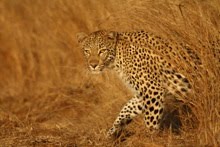It is still snowing in the Alps. Yesterday and today, the snow line has dropped down to only about 1000m, that is fairly close to the valley floor and certainly exceptional for this time of year. Winter is really trying its hardest to hang on this year (but Mrs Spring has other ideas!).

But yesterday, with the foul weather, came the Common Swifts. Finally they got here! and as soon as the sun poked out a little bit, they were all over the place. It is incredible how the swifts seem to arrive in their droves when they eventually arrive. On Sunday, I was in Südtirol (the Italian province bordering Austrian Tirol) and saw quite a number of swifts about there, but it took another good few days before they really took the plunge in to the mountains.
One of my aims this year is to find the Pallid Swift. We saw lots of them when we were on the
Spanish Costa Brava last year, and I got quite familiar with them. The thing is, they are apparently moving more and more northwards from their traditional summer haunts on the Mediterranean coast, but the thing is that they are so similar to the Common Swift that unless one is actually looking for them, I think that they are bound to be missed most of the time.
Their call is the easiest way to tell the Pallid Swift apart from Common Swift. Listen to the call of
the Common Swift here (from
garden-birds.co.uk) and then compare it to the
call of the Pallid Swift (played from
Xeno-canto.org). Now, I am not saying that they are worlds apart, just that with practice, you can tell they are distinguishable. What complicates matters is that they are often in mixed flocks, so what you could try doing is taking some photos of the two, and then trying to ID the two swifts from the photos.
The Common Swift tends to have thinner, more pointed wings, overall a matt, darker colour, and a small, but clear throat bib. The Pallid swift is often browner (somewhat paler), has a heavier build, and more likely to have a larger, diffuse pale patch on the throat. Because of the "heavier" body form, the Pallid Swift can often seem to have a clear waistline where the chunky body reduces down to the thinner tail region. The three top tips for spotting a Pallid Swift in a crowd are probably to look for:
- the hips
- paler secondaries on a brown background when seen from above (common swift is uniformly dark), and
- the "feather scaling". particularly the breast plumage will often appear to be scaled as the dark brown coloured feathers can have a lighter border to them
I found trying to look at the extent of the throat patch and the pointedness of the wings to be very unreliable swift identification features in the field. When first getting used to the pallid swifts and common swifts, I tried as hard as I could to listen carefully (as usual, it helped to have local pro ornithologists and birders about) and took lots and lots of photos. Most of the time, it turned at that there were both pallid swifts and black swifts all mixed up in the same flock. But with a bit of practice, it got easier.
If you live in an area north of the regular breeding area, a good tip is to look out for swifts that are unusually early or unusually late. Because they tend not to migrate as far as the common swifts, the pallid swifts tend to be less keen to migrate back to their "winter" homes down south.
For more info on the Pallid Swift/Common Swift identification debate, you may want to look up some of these links:
Related Birdforum thread on Pallid/Common Swifts (with some photos and little consensus)
If you understand Italian then try hereFor photos of Pallid Swift,
please see my follow-up post, here.
For other blog posts on
swifts, and
Alpine Swift, click on the links.
Happy birding, and good luck finding both swift species!
Dale Forbes
p.s. I am writing this from a hut in the mountains (heading out to look for Rock Partridge, Ptarmigan and Black Grouse in the morning early). When I get a little bit of time with my external hard drive, I will be able to get some Pallid Swift photos up here.


























